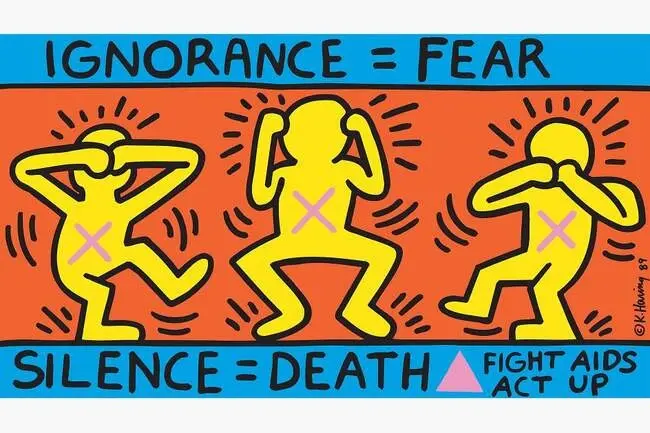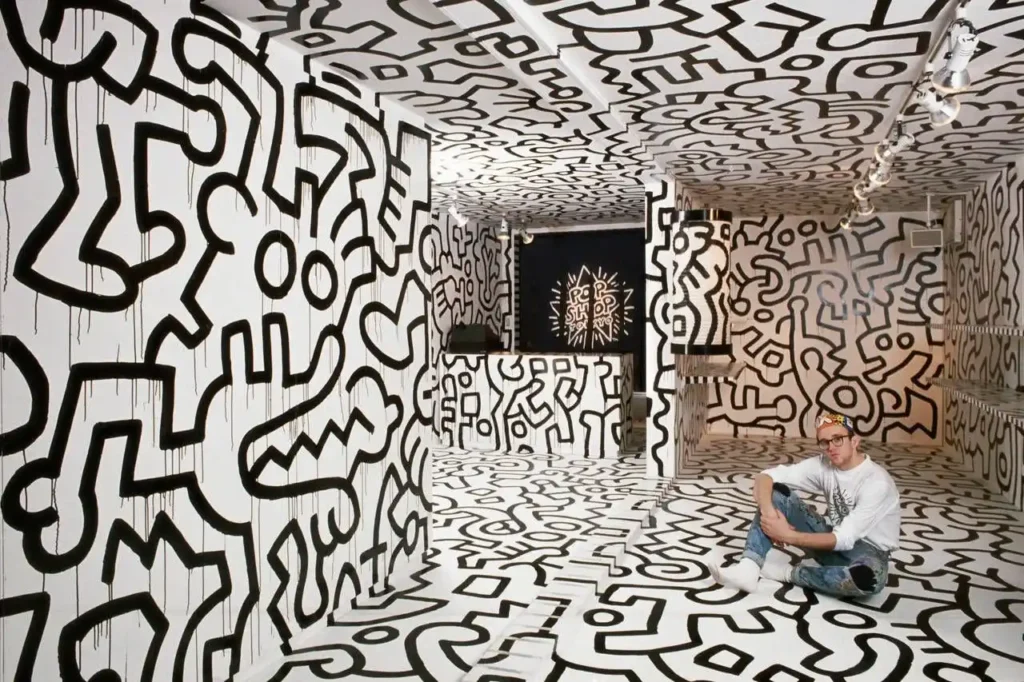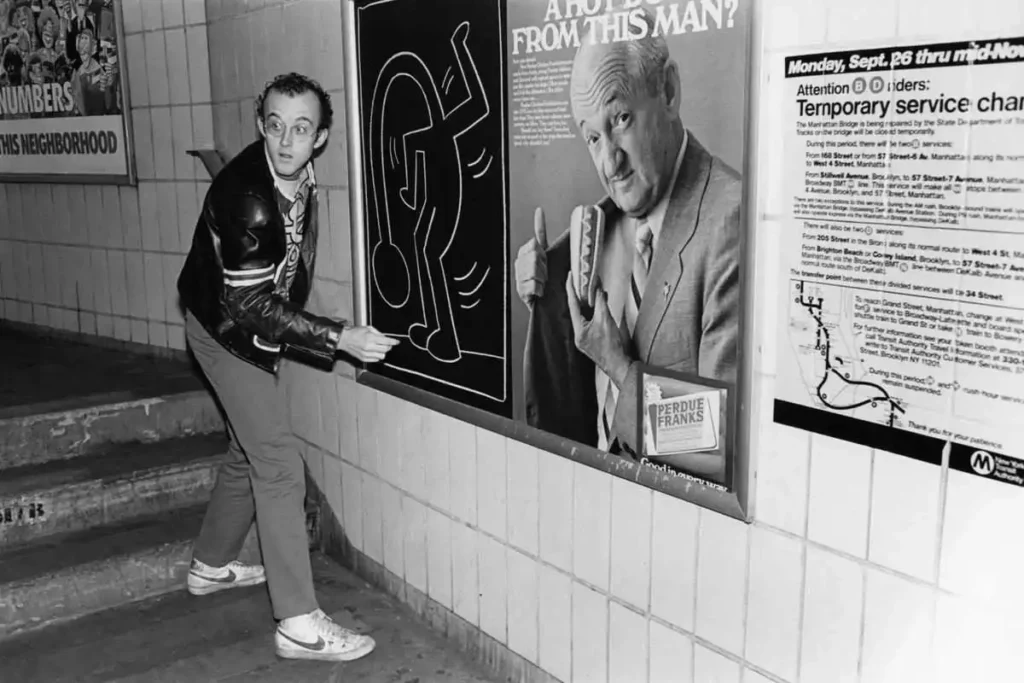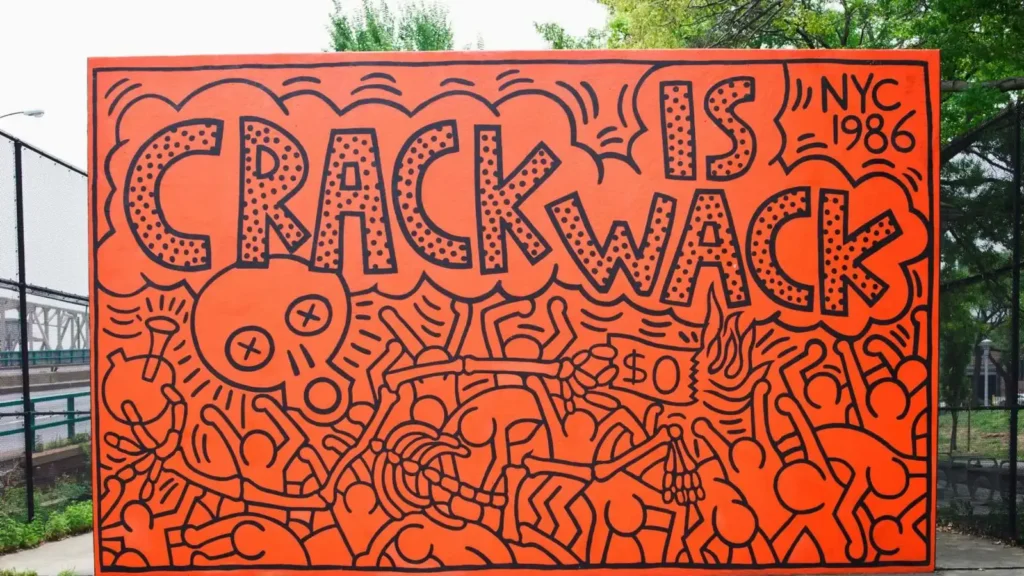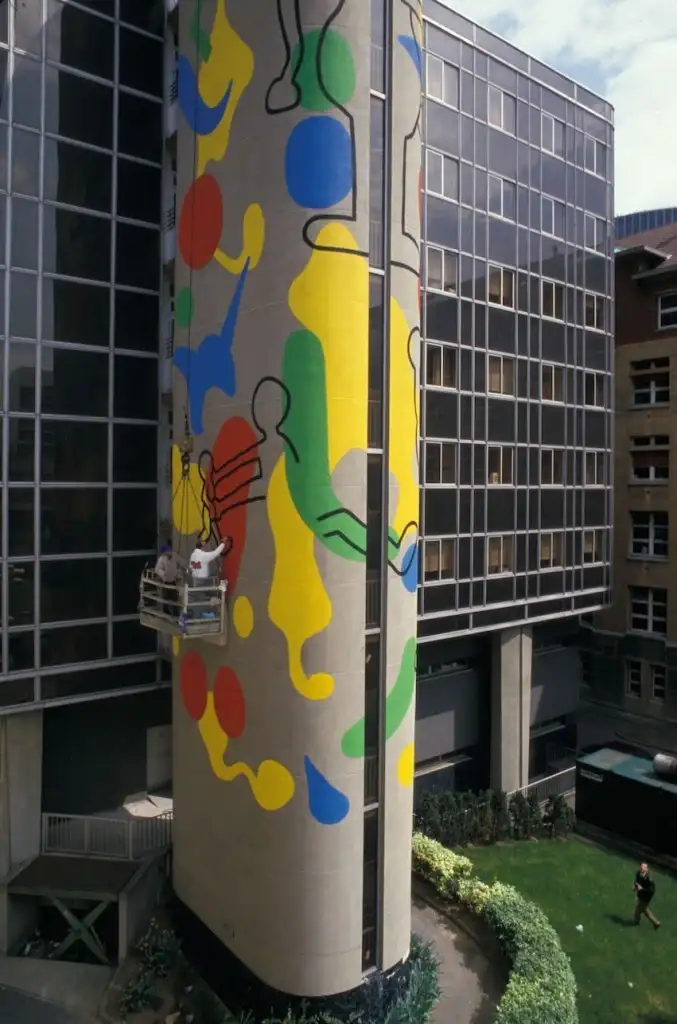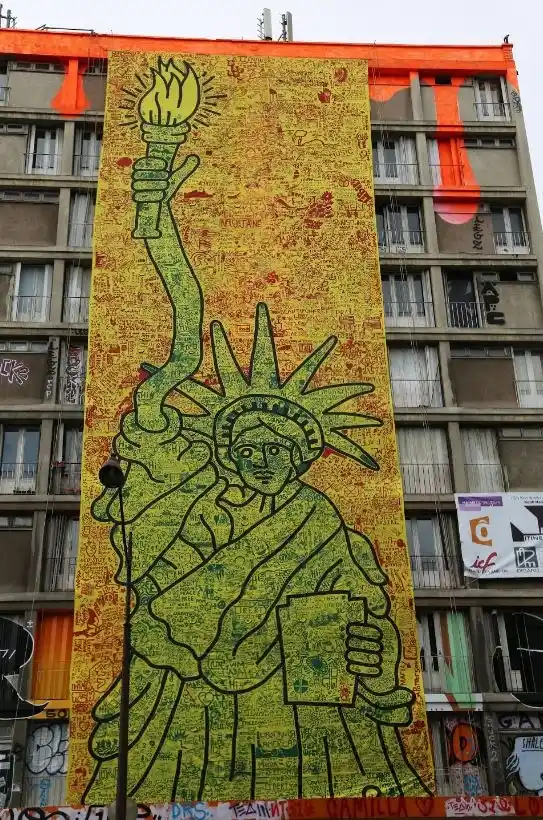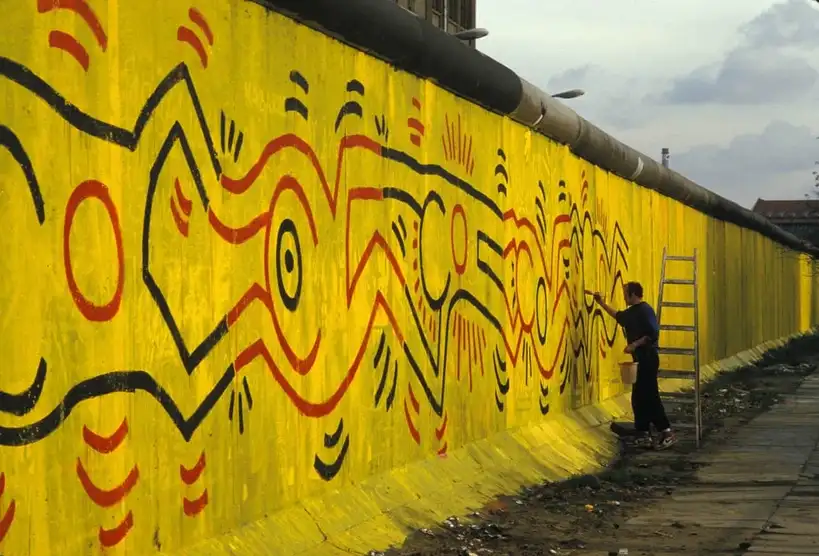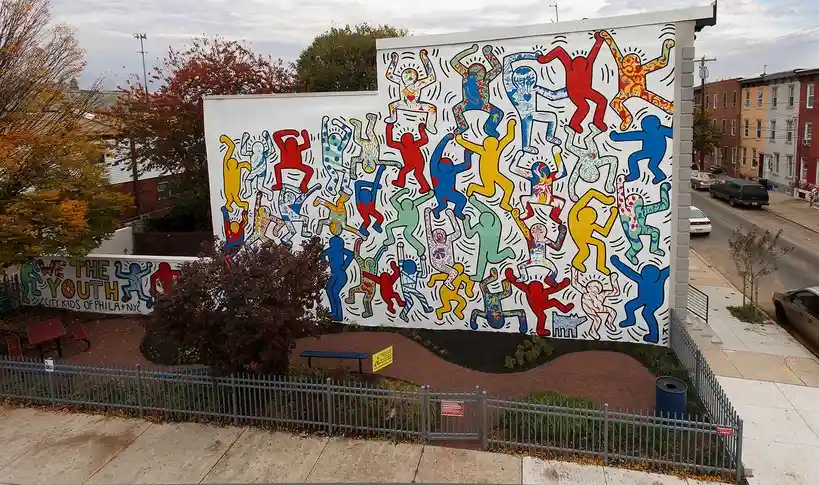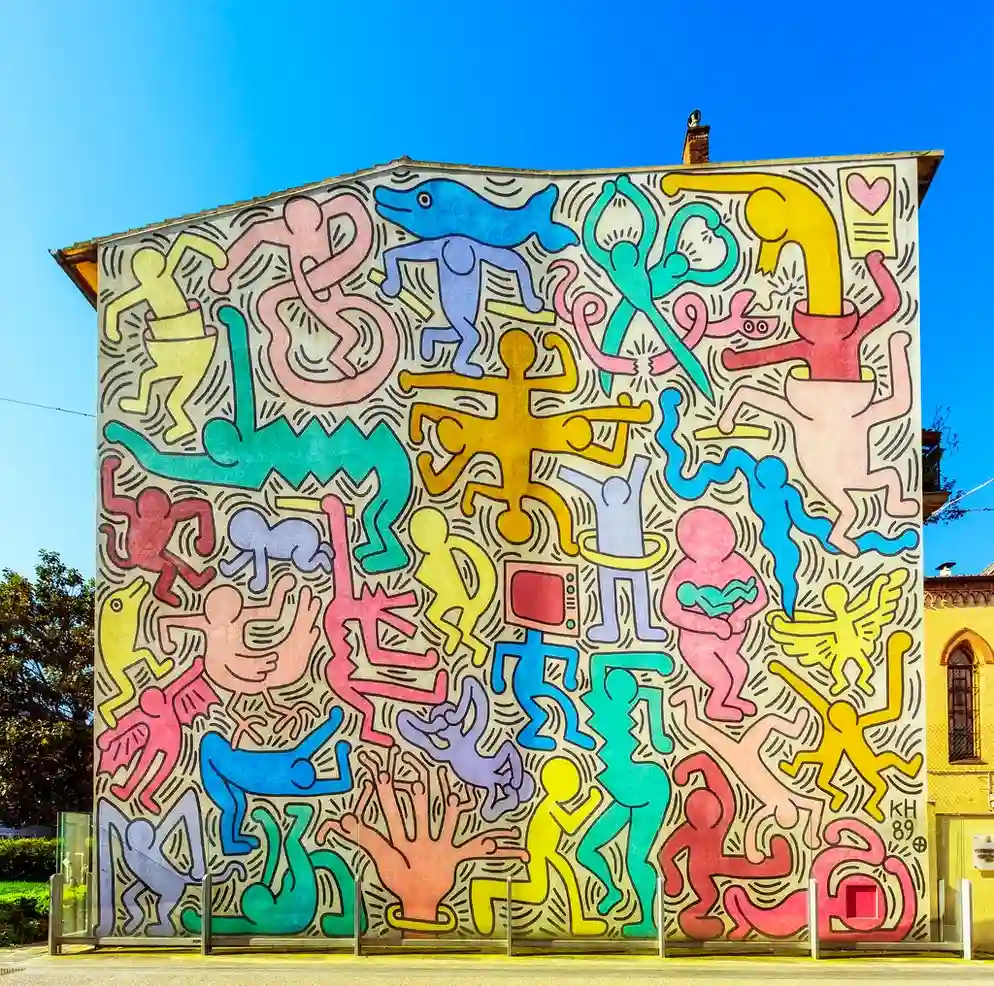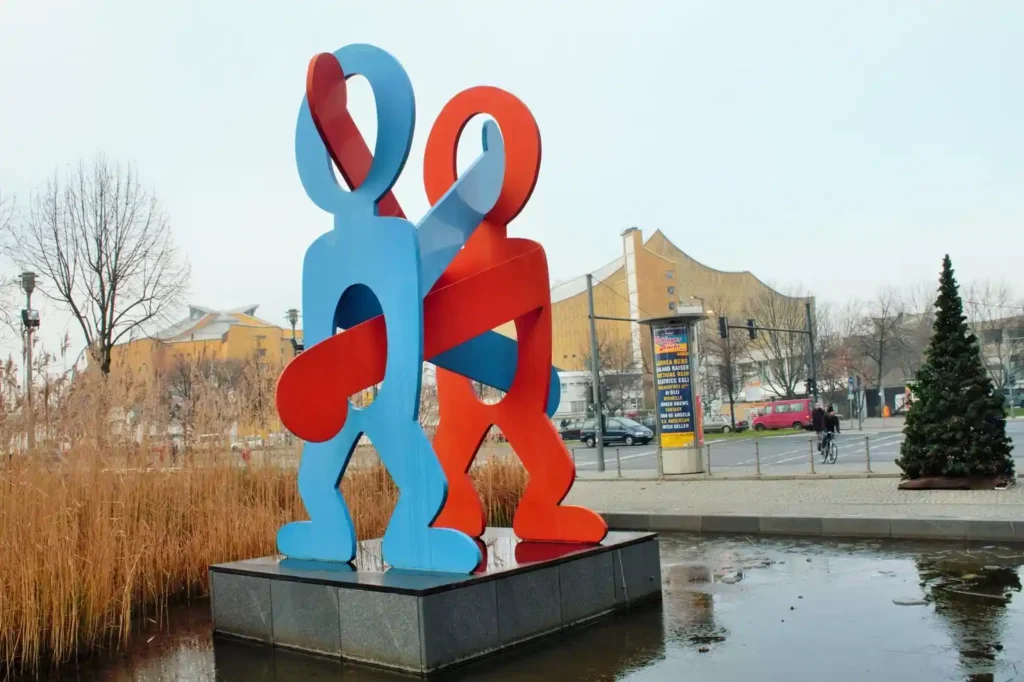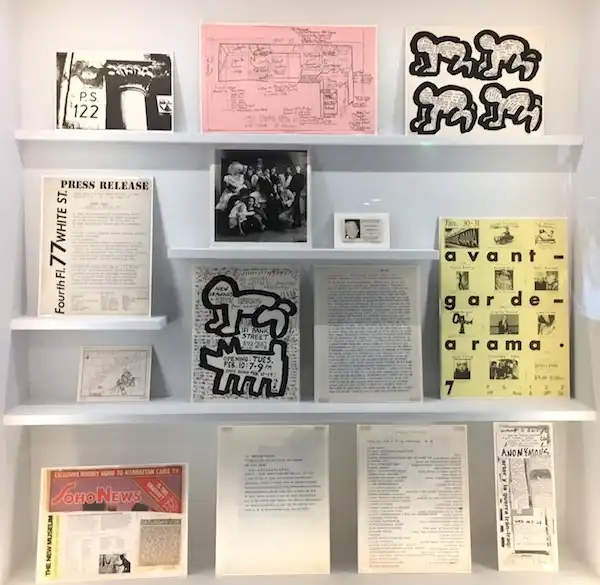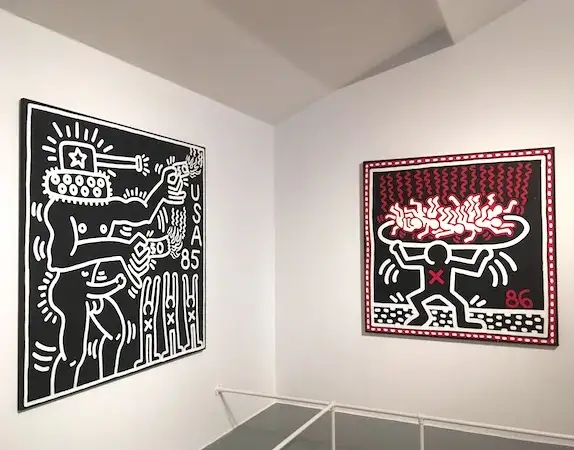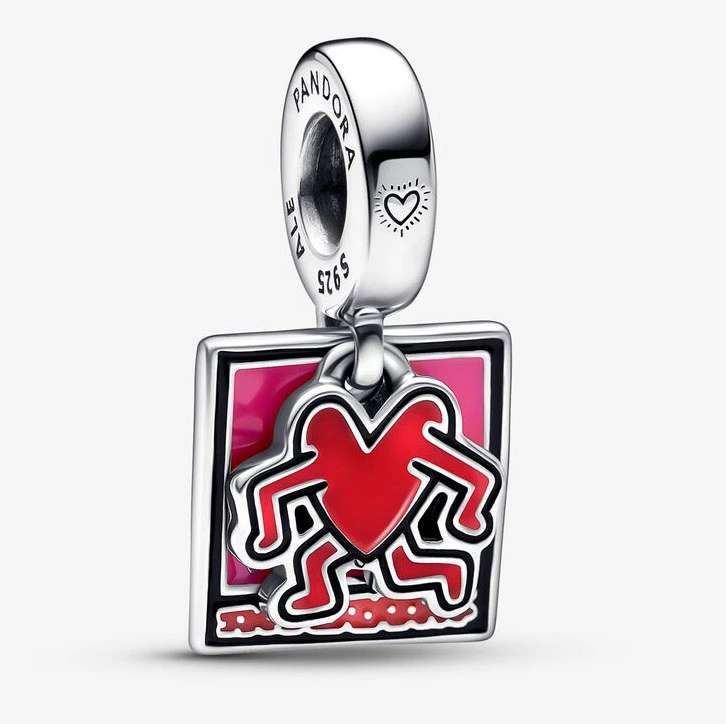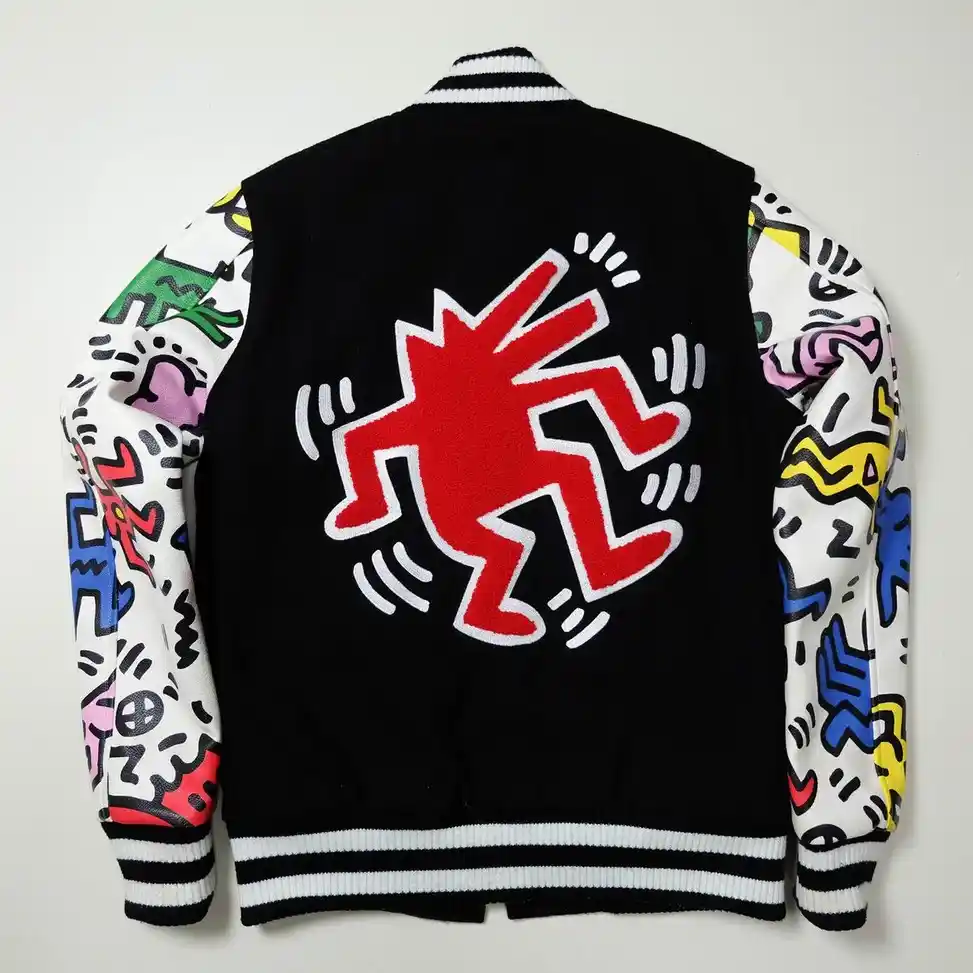Haring was born in Reading, Pennsylvania, and grew up in nearby Kutztown. From an early age, he showed a talent for drawing and painting, and was encouraged by his parents to pursue a career in art. He attended the Ivy School of Professional Art in Pittsburgh before moving to New York City in 1978 to study at the School of Visual Arts.
It was in New York that Haring first encountered the world of street art, and began to develop his signature style. Inspired by the work of graffiti artists, he began to create his own vivid, cartoon-like figures, often incorporating symbolic elements that reflected his interest in pop culture, mythology, and social justice. Haring’s work quickly gained a following on the streets of New York, with his subway drawings and mural projects becoming fixtures of the city’s downtown scene.
In 1981, Haring held his first solo exhibition at the Westbeth Painters Space, which included his iconic Radiant Baby drawings. The show was a critical and commercial success, and helped to launch Haring’s career as a gallery artist. Over the next few years, he exhibited his work in galleries and museums around the world, including the Whitney Museum of American Art, the São Paulo Biennial, and the Venice Biennale.
As Haring’s fame grew, so did his commitment to using his art to promote social justice and awareness. He was also involved in numerous philanthropic projects, including the establishment of the Keith Haring Foundation in 1989 to fund AIDS research and support children’s art education.
Throughout his career, Haring devoted much of his time to public works, which often carried social messages. He produced more than 50 public artworks between 1982 and 1989, in dozens of cities around the world, many of which were created for charities, hospitals, children’s day care centers and orphanages.
a mural created for the 100th anniversary of the Statue of Liberty in 1986, on which Haring worked with 900 children
a mural painted on the western side of the Berlin Wall three years before its fall
a Tuttomondo mural in Pisa
a Untitled (The Boxers) sculpture in Berlin
Tragically, Haring’s life was cut short in 1990 when he died from AIDS-related complications at the age of 31. In his short career, however, he left a lasting impact on the art world and on popular culture. His bold, graphic style and his commitment to using his art for social change continue to inspire successive generations of artists today.
In recent years, Haring’s legacy has been celebrated in numerous retrospectives and exhibitions around the world, including a major show at the Tate Liverpool in 2019.
The enduring appeal of his work can be seen in its continued popularity as a source of inspiration for contemporary artists, as well as in its appropriation by the fashion and design industries, where Haring’s iconic imagery has become a global brand.

